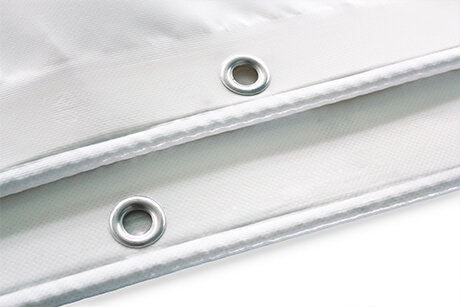Tarps News Categories

Anti-mold is an important issue in the use of PVC Tarpaulin. In order to better avoid this phenomenon, some anti-fungal agents will be added during the production process. The commonly used anti-fungal agents are mainly The following:

1) Compound antifungal agent: single-component antifungal agent has certain limitations when used, its sterilization spectrum is narrow, the dosage is large, the time is short, and the cost is high. Some antifungal agents have poor biodegradability and safety in use. , Has a greater impact on the environment.
2) Organic antifungal agent: The organic antifungal agent has a broad spectrum, fast action, good antibacterial and antifungal effect, but some organic antifungal agents have poor heat resistance, short duration of antifungal effect, and certain toxicity.
3) Inorganic antifungal agents: Inorganic antifungal agents are widely used and have many types, usually silver, copper, zinc and other metal ion antibacterial agents and metal oxides (such as titanium dioxide, zinc oxide and other nano antibacterial agents). The antibacterial mechanism has contact reaction hypothesis and catalytic reaction hypothesis.
4) Natural antifungal agents: most of the natural antifungal agents are refined from animals and plants, including chitosan, serum albumin, cinnamon oil, luohan cedar oil, allicin and natural phenols. The very hard parts of animal shells such as natural shells, crabs, shrimps, fish bones and insects are removed from the N-acetyl group to obtain chitosan. The natural antifungal agent does not pollute the environment during production and use, and has good biocompatibility.
you may also like
- PVC knife coating fabric - Cover Tarpaulin Blue and Gray
- 20' X 27' Lightweight Flatbed Trailer Steel Tarp - 14 Oz. Black Tarp
- 24' X 18' Heavy Duty Flatbed Trailer Steel Tarp - 18 Oz. Blue Tarp
- Custom Heavy Duty Plastic Pvc Mesh Fabric Cargo Net Dump Trucks Tarp System Truck Cover For Sale
- Open Mesh Tarp Side Roll Tarp for End Dump Trailer
- PVC Heavy Duty Weather Resistant Outdoor Clear Waterproof Curtain
- PVC knife coating fabric inflatable material-Green grass
- Heavy Duty Vinyl Coated Mesh Tarps Protection for Trailers
- 750G/850G Block out Tent Material
- 750G Keder Tent Material White
others also viewed
- Five characteristics of pvc coated fabric
- What Is Considered A Heavy Duty Tarp?
- How to Build a Canopy Using PVC Pipes and PVC Tarp
- Is a Poly Tarp the Same As a Vinyl Tarp?
- Folding method of pvc vinyl tarps
- The Benefits of Canvas Tarps
- The Difference Between PE And PVC Tarpaulin
- Advantages of JUM Lumber Tarps and Flatbed Truck T
- Advantages of using flatbed tarp
- How to eliminate the static electricity of the pvc

